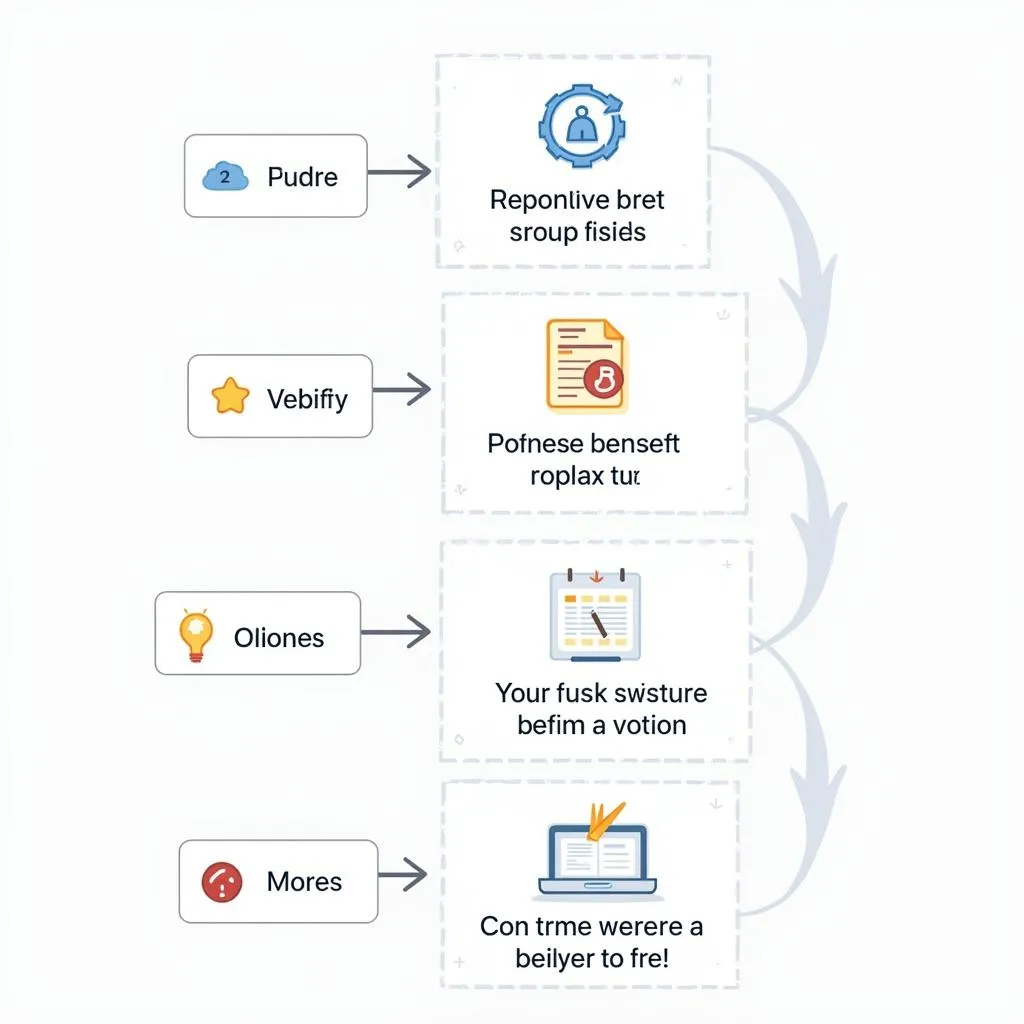Understanding and effectively implementing bug reporting rules is crucial for any software development team, especially for students in class 11 starting their journey in the world of programming. A well-structured bug report ensures clear communication between developers and testers, leading to faster bug fixes and a higher quality product. This comprehensive guide delves into the essential bug rules for class 11, equipping students with the knowledge to write effective bug reports.
Why Bug Reporting Matters in Class 11
As you begin to learn programming in class 11, you’ll inevitably encounter bugs in your code. These bugs can manifest as unexpected behavior, crashes, or incorrect output. While frustrating, bugs present valuable learning opportunities. Learning to effectively report these bugs is as important as learning to code.
 Effective Bug Reporting Process
Effective Bug Reporting Process
Key Components of a Bug Report
A well-written bug report should contain specific information to help developers understand and reproduce the issue. Here’s a breakdown of the key components:
1. Title:
- Concise and Descriptive: The title should immediately convey the problem’s nature.
- Include Keywords: Use relevant terms that someone searching for this specific issue might use. For example, “Calculator App Crashes on Division by Zero.”
2. Description:
- Detailed Explanation: Provide a comprehensive description of the bug, including what happened, what you expected to happen, and the steps to reproduce the issue.
- Environment Details: Mention the operating system, browser (if applicable), and any relevant software versions used.
3. Steps to Reproduce:
- Clear and Numbered: Provide a numbered list of steps that consistently lead to the bug. The more straightforward these steps are, the easier it is for the developer to replicate and understand the problem.
 Clear Steps to Reproduce a Software Bug
Clear Steps to Reproduce a Software Bug
4. Expected Result:
- What Should Happen: Describe the expected outcome after following the steps to reproduce.
5. Actual Result:
- What Really Happened: Clearly state what happens instead of the expected outcome.
6. Severity and Priority:
- Severity: How severely does the bug impact the software’s functionality? Is it a minor inconvenience or a major crash?
- Priority: How urgently does this bug need to be fixed? Is it blocking critical functionality, or can it be addressed later?
7. Attachments (If Applicable):
- Visual Evidence: Screenshots or videos can be invaluable, especially for visual glitches.
- Log Files: Error logs provide technical details that can help pinpoint the problem’s source.
Class 11 Bug Reporting Best Practices
Following these best practices will further enhance your bug reports:
- One Bug, One Report: Report each bug separately for clarity and easier tracking.
- Be Specific: Avoid vague language and provide precise details.
- Reproduce the Bug: Ensure you can consistently reproduce the bug before reporting it.
- Proofread Carefully: Grammar and spelling errors can distract from the bug’s importance.
 Proofreading a Bug Report
Proofreading a Bug Report
Conclusion
Mastering bug reporting is an essential skill for aspiring programmers in class 11. By following these guidelines, you can contribute to creating cleaner, more efficient, and higher-quality software while honing your analytical and communication skills. Remember, a well-written bug report is a developer’s best friend!
For any assistance with VNG Games, feel free to contact us.
Phone Number: 0902476650
Email: [email protected]
Address: 139 Đ. Võ Văn Kiệt, Hoà Long, Bà Rịa, Bà Rịa – Vũng Tàu, Việt Nam
We have a 24/7 customer support team ready to assist you.





